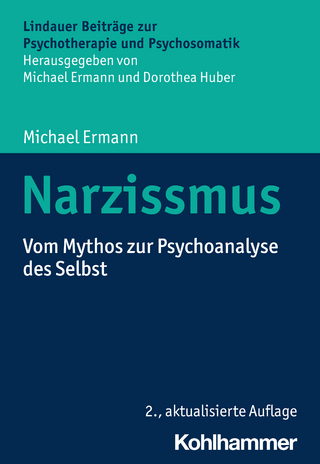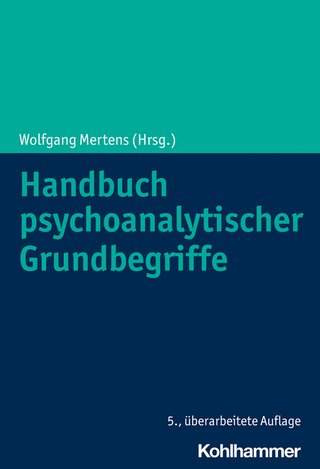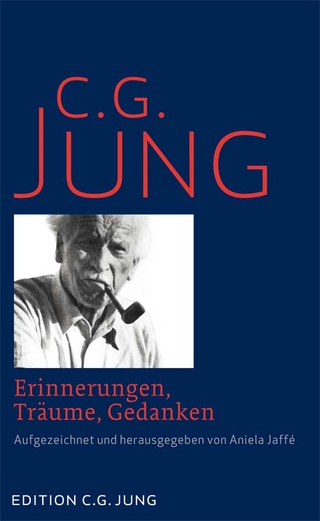
The Power of Group Attachment
Routledge (Verlag)
978-1-032-22293-6 (ISBN)
- Noch nicht erschienen (ca. September 2024)
- Versandkostenfrei
- Auch auf Rechnung
- Artikel merken
Arturo Ezquerro and María Cañete deliver a creative integration of updated theoretical knowledge, meticulous research and inspiring clinical work; they go beyond the consulting room, and draw on cross-cultural studies, to postulate that there is no such thing as individual or interpersonal attachment without group attachment. Their joint work enhances and brings closer together the fields of group analysis and attachment theory. Compelling narratives from group-analytic psychotherapy, for a broad range of problems (including trauma, suicidality, mood disorder and psychosis), demonstrate effective change from polarisation and hatred (idealising one’s own group and denigrating other’s) to working through conflict and accepting real differences between members, the hallmark of both therapy and healthy social life.
Original, scholarly, yet personal and accessible, the book is addressed to mental health professionals and managers as well as politicians and educators: it expands the reader’s social and democratic consciousness at this crucial time when our world is descending fast into pathology, global warming, and vicious violence stemming from unresolved personal and collective trauma.
Dr Arturo Ezquerro: London-based consultant psychiatrist, psychoanalyticpsychotherapist, and group analyst; senior assessor and trainer, Institute of Group Analysis; honorary member International Attachment Network, and World Association of International Studies; former Head NHS Medical Psychotherapy Services for Brent; over a hundred publications in six languages, including Encounters with John Bowlby (Routledge). Dr María Cañete: consultant psychotherapist, psychiatrist, and group analyst; trained at the Tavistock Clinic; senior trainer, Institute of Group Analysis; former director NHS group psychotherapy programmes, University College, St Charles, and Mile End Hospitals, London; published widely in English, German and Spanish, including Group Analysis throughout the Life Cycle (Routledge).
About the authors
Endorsements
Dedication
Acknowledgments
Preface by Sir Paul Preston
Foreword by Dr Earl Hopper
Introduction: A radical group attachment viewpoint
Arturo Ezquerro and María Cañete
0.1 The interface between interpersonal and group attachment
0.2 Synopses of the book chapters
0.3 Some learning points and concluding thoughts
Chapter 1: Group attachment created humankind
Arturo Ezquerro and María Cañete
1.1 Introduction
1.1(i) Contents and aims of the chapter
1.2 Section I: An exploration through human evolution
1.2(i): The birth of humankind
1.2(ii) The growth of the human group
1.2(iii) Migratory processes: survival and exploration
1.2(iv) The need for group attachment
1.2(v) Does stranger mean danger?
1.2(vi) Alloparenting and group attachment
1.2(vii) The cultural acquisition device
1.2(viii) Monotropic versus multiple caregiving
1.2(ix) Further thoughts on group attachment
1.2(x) Group selection and natural selection
1.3 Section II: Group attachment as an evolving concept
1.3(i) An implicit sense of group attachment
1.3(ii) Systematic research on group attachment
1.3(iii) Attachment and group analysis
1.3(iv) Attachment and wider group psychotherapy
1.3(v) Organisations as a group attachment space
1.3(vi) Conceptualising group attachment
1.4 Conclusion
Chapter 2: Bipolar disorder: ups and downs affecting interpersonal and group life
Arturo Ezquerro and María Cañete
2.1 Introduction: The worst disaster that can befall a group?
2.1(i) Contents and aims of the chapter
2.2 Historical context: From the Old Testament through the Classics to the Mystics
2.2(i) Melancholia and mania in the Early Modern period and Industrial Age
2.3 Contemporary psychiatric perspectives
2.3(i) The impact of lithium on the management of manic-depressive psychosis
2.3(ii) Early 21st century: Bipolar times
2.4 Psychoanalytic and attachment contributions
2.5 Review of the literature on group psychotherapy with bipolar patients
2.6 A clinical case study by Arturo Ezquerro
2.6(i) The referral and assessment process
2.6(ii) A newcomer in an ongoing psychotherapy group
2.6(iii) Protecting personal and group boundaries
2.6(iv) Group cohesion versus group coherency
2.7 Discussion
2.8 Conclusion
Chapter 3: Fostering a group attachment culture in a day-unit for psychotic patients
Arturo Ezquerro and María Cañete
3.1 Introduction
3.1(i) Contents and aims of the chapter
3.2 Traditional psychoanalytic perspectives on psychosis
3.3 Bowlby’s attachment response to Freudian formulations
3.4 Other psychoanalytic contributions
3.5 Contemporary attachment standpoints on psychosis
3.6 An outline of the literature on group psychotherapy for psychosis
3.7 A case study by María Cañete: Group-analytic therapy with psychotic patients
3.7(i) The small therapy group: early stages
3.7(ii) Laughter: defence or enriching reinforcement?
3.7(iii) Developing a therapeutic culture within the group matrix
3.7(iv) Endings and new beginnings
3.8 Discussion
3.9 Conclusion
Chapter 4: Suicide risk: when group attachment is not enough, or is it?
Arturo Ezquerro
4.1 Introduction: Individual or group psychotherapy for suicidal patients?
4.1(i) Contents and aims of the chapter
4.2 Combining individual and group psychotherapy for highly vulnerable patients
4.3 Suicide from an attachment perspective
4.4 Further thoughts on suicidality
4.4(i) An evolutionary perspective
4.4(ii) Approaching suicide risk with an ethos of “we are all in the same boat”
4.4(iii) Some recent developments on suicide prevention
4.5 The clinical picture
4.6 The therapy group
4.7 Individual and group psychotherapy combined
4.8 Discussion
4.9 Conclusion
Chapter 5: Group cohesion versus group coherency through an attachment lens
Arturo Ezquerro
5.1 Introduction: The politics of uncertainty
5.1(i) Contents and aims of the chapter
5.2 Complexity, cohesion and coherency in group psychotherapy
5.3 An attachment perspective on group cohesion and group coherency
5.4 A clinical case study
5.4(i) Interpersonal and group ruptures
5.4(ii) Reparative group work: from cohesion to coherency
5.5 Discussion
5.6 Conclusion
Chapter 6: A case of perverse group attachment
Arturo Ezquerro
6.1 Introduction
6.1(i) Contents and aims of the chapter
6.2 Filicide: an overview
6.3 Captain Aguilera: the man
6.3(i) Going back to an insecure base
6.3(ii) A military coup leading to a civil war
6.3(iii) The aftermath of a devastating war
6.3(iv) The captain’s late years resulting in tragedy
6.4 A group culture of unresolved trauma, scapegoating and violence
6.4(i) Vicious repression, racism and genocide
6.4(ii) The terror guns and voices of a perverse group
6.5 An attachment-based psychodynamic and group-analytic formulation
6.5(i) Some dynamics of perverse group attachment
6.6 Conclusion
Afterword by Dr Cheri Marmarosh
Index
| Erscheint lt. Verlag | 13.9.2024 |
|---|---|
| Reihe/Serie | The New International Library of Group Analysis |
| Zusatzinfo | 1 Halftones, black and white; 1 Illustrations, black and white |
| Verlagsort | London |
| Sprache | englisch |
| Maße | 156 x 234 mm |
| Themenwelt | Geisteswissenschaften ► Psychologie ► Psychoanalyse / Tiefenpsychologie |
| Medizin / Pharmazie ► Medizinische Fachgebiete ► Psychiatrie / Psychotherapie | |
| ISBN-10 | 1-032-22293-X / 103222293X |
| ISBN-13 | 978-1-032-22293-6 / 9781032222936 |
| Zustand | Neuware |
| Haben Sie eine Frage zum Produkt? |
aus dem Bereich


